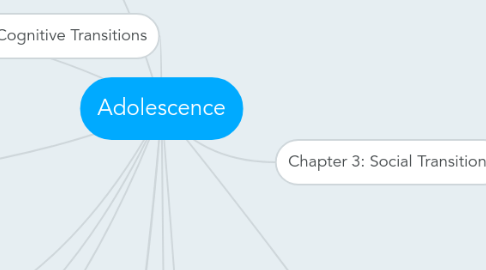
1. Adolescents often go through a stage of relativistic thinking where they question the validity of absolutes.
2. Compared to children, adolescents are able to better think in multiple dimensions.
3. A type of logical reasoning that draws logically necessary conclusions from a general set of premises.
4. During adolescence individuals are becoming better able to engage in "thinking about thinking", or metacognititon. *Video Attached*
5. Being able to think about what is possible and not what is real, is reflected in improvements in deductive reasoning that is based on principles of logic.
6. Chapter 2: Cognitive Transitions
6.1. Changes in Cognition
7. One manifestation of adolescents increased facility with thinking about possibilities is the development of deductive thinking.
8. One of the most important changes in thinking during adolescence is the increased ease with which individuals think about what is possible or hypothetical.
9. Theoretical Perspectives on Adolescent Thinking
9.1. The two dominant theoretical perspectives in the study of adolescent cognition are the Piagetian perspective and the information-processing perspective.
9.2. Piaget theorized that thinking during adolescence is qualitatively different from thinking during childhood. Researchers show that changes in cognition during this time are more gradual.
9.3. The information-processing perspective focuses on the specific components of thinking, such as memory and attention, and asking whether and to what extent these improve in adolescence.
10. Individual Differences in Intelligence in Adolescence
10.1. The IQ test measures the specific type of intelligence that is predictive of success in school and scores are usually stable during adolescence.
10.2. Sex differences in intellectual abilities have largely disappeared and are limited to differences on spatial ability.
11. Adolescent Thinking in Context
11.1. Social cognition is evident in adolescence. There is increased understanding of other people, social relationships, social conversations, and personal rights.
11.2. Higher rate of risk is found to be caused by age differences in priorities, in psychosocial factors, and in the contexts in with adolescents and adults spend together.
12. Adolescents solve problems more with inductive thinking.
12.1. Where an inference is made based on the accumulated evidence.
13. Chapter 3: Social Transitions
13.1. Changes in social definition may have profound effects on development in the realms of identity, autonomy, intimacy, sexuality and achievement.
13.1.1. Some argue that the transition into adulthood is too long, vague, and disorderly.
13.2. As a Social Invention
13.2.1. Inventionists argue that adolescence is more a social invention than a biological or cognitive phenomenon.
13.2.2. Our conception of adolescence, whether it exists as a separate period and what its nature is, is determined largely by forces in the broader social and can change the nature of adolescence.
13.3. Legal Boundaries
13.3.1. Young adults are expected to serve their community in case of emergency or need. In many cultures, training for warfare is often demanded of young people once they attain adult status.
13.3.2. Part of the problem is that development during adolescence is so rapid and variable between individuals that it is difficult to know at what chronological age a line should be drawn between legally viewing someone as an adult verses a child.
13.3.2.1. -Greater privileges
13.3.2.2. Increase in responsibly
13.3.2.3. Self-managment
13.3.2.4. Participation in adult society
13.3.2.5. Crime sentence for adults vs. Child
13.4. Variations in Social Transitions
13.4.1. In many traditional societies, adolescence is marked by a formal initiation ceremony and specific rites of passage. In contemporary industrialized society it is vague and poorly defined.
13.4.1.1. They are more likely to define adulthood with respect to psychological achievements than role transitions.
13.4.1.2. Continuous Passage verses Discontinuous Passage
13.4.1.2.1. Continuous passage is when the adolescence assume the roles and status of adulthood bit by bit, with s good amount of preparation and training along the way.
13.4.1.2.2. Discontinuous passage is when the adolescent is thrust into adulthood abruptly, with little preparation.
13.4.2. Three different transitions that adolescence go through are divided into "Haves", "Have-nots", and those who are in-between.
13.4.2.1. The prolonged nature of the adolescent passage in contemporary society has caused difficulties for many of todays youth. More so on poor minority youth living in poverty.
13.4.2.1.1. Mentoring programs help those at risk adolescence to an extent, but isn't enough to help some make successful transition to adulthood.
13.4.2.2. Neighborhoods influence adolescence development, especially on those poor environment. Exposure to violence is severe due to the more immediate settings in which they spend more time.
